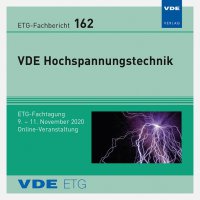Influence of the permitted parameter variations on the determined QIEC value according to IEC 60270
Conference: VDE Hochspannungstechnik - ETG-Fachtagung
11/09/2020 - 11/11/2020 at online
Proceedings: VDE Hochspannungstechnik
Pages: 6Language: englishTyp: PDF
Authors:
Winkelmann, Erik (HIGHVOLT Prüftechnik Dresden GmbH/ Institute for Acoustics and Speech Communication, Technische Universität Dresden, Germany)
Steiner, Christoph (University of Applied Sciences Dresden, Germany)
Shevchenko, Iaroslav (Chair of Energy Distribution and High Voltage Engineering, Brandenburg University of Technology Cottbus-Senftenberg, Germany)
Steiner, Thomas; Kaltenborn, Uwe; Schmidt, Volker (HIGHVOLT Prüftechnik Dresden GmbH, Germany)
Abstract:
The partial discharge measurement according to IEC 60270 is a widely used method for evaluating the quality of an insulation arrangement. The determined QIEC value also serves as a commercial criterion for assessing the quality of equipment and components and is therefore an essential part of factory acceptance tests. Exceeding contractually agreed QIEC values can lead to commercial consequences. The IEC 60270 standard describes various concepts for the design of partial discharge measuring devices. Within these concepts, further degrees of freedom are given for the measuring circuit and the evaluation of the measured data. This paper is investigating the influence of the permitted parameters on the QIEC value determined according to IEC 60270. A concentrated test setup that allows to test different measuring systems simultaneously was used to examine different setups and the resulting QIEC values. The analysis of this data showed that the QIEC values can be influenced through targeted parameter variations within the permitted ranges according to IEC 60270. Finally, proposals were derived to improve the reproducibility of the determined QIEC values. These proposals should initiate a technical multilateral discussion on how partial discharge measurement technologies should be developed further, based on modern and highly improved digital instruments and evaluations.


